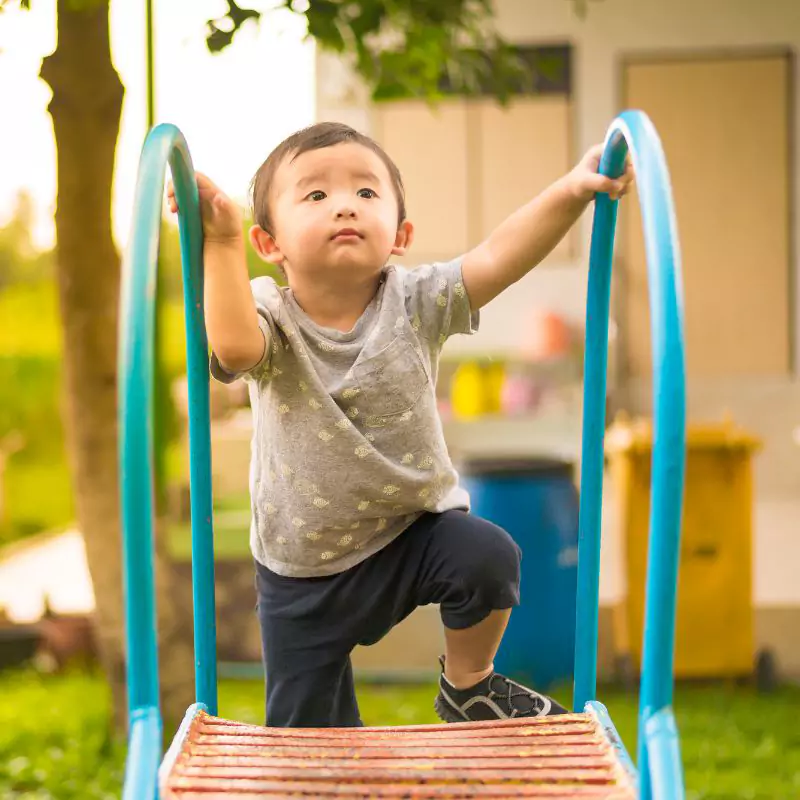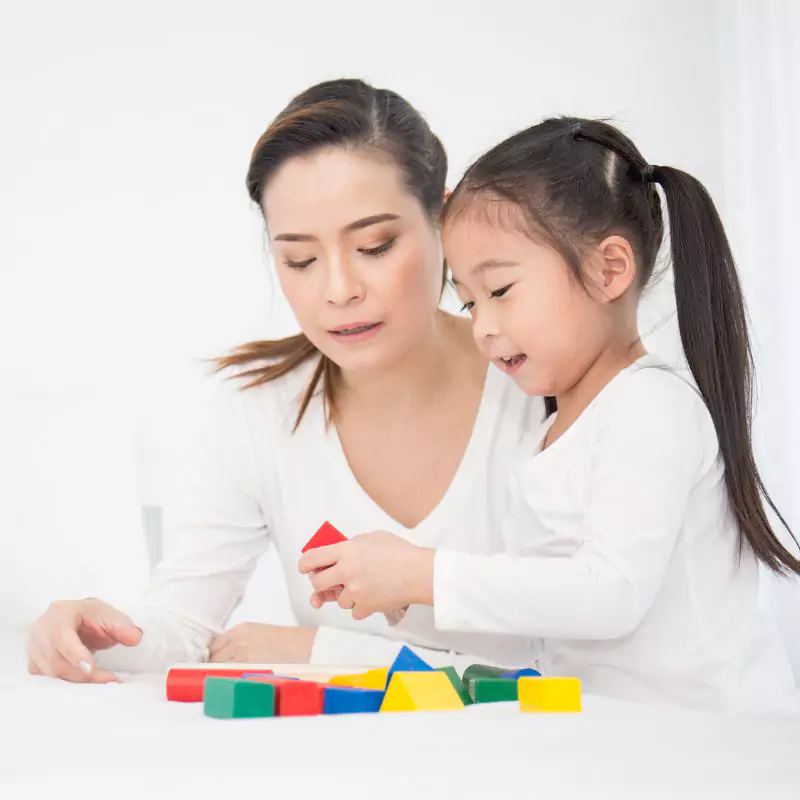How To Strike A Balance Between Structured Vs Unstructured Play
In earlier times, play-based learning was often a child-initiated, open-ended activity. But for many young children of today, play has become an adult-directed and highly structured activity. This shift could well inhibit and risk the growth of a child’s abilities to cope with the ground reality of the digital age.
Research clearly indicates that unstructured play activities during the early growing years impacts and shapes the neural network of the child’s brain. The American Academy of Pediatrics says that unstructured playtime is one of the healthiest activities for young children: “The challenge for society, schools, and parents is to strike the balance that allows all children to reach their potential, without pushing them beyond their personal comfort limits and while allowing them personal free time.”
It is mostly through unstructured play activities that young children learn how to work together, adapt to different situations, experiment, explore, construct meaning, and begin to learn what they like, discover what they are good at and how to express their individuality.
On the other hand, structured play activities for preschoolers expose children to situations where some of these skills may be nurtured, but the nature of these programmed activities limits the opportunity for individual expression and the experience of unexpected outcomes necessary for creative discovery.
Peter Gray, the author of the book “Free to learn” insists that unleashing the instinct to play freely will make our children happier, more self-reliant, and better students for life. As well as overcome boredom, have the time to daydream and immerse themselves in hobbies, and the time to read comics.
In fact, he went on to even suggest “What I learned through my play has been far more valuable to my adult life than what I learnt in school. Children should experience twice as much unstructured time as structured play experiences.”
What exactly is unstructured play?

These are activities that children dream up on their own without adult intervention. These types of unstructured play activities rarely have predetermined goals or objectives but instead, allow children to create their own rules and establish their own limits.
Unstructured play is how children develop creative thinking and behaviour skills and realize the importance of these for their future well-being. Creativity is vital for improving the economy and quality of life under the accelerating rapid change we continue to experience.
A perception still lingers that the ability to think creatively is a gift that is difficult to teach and define and is relevant only to the arts. However, facts indicate something entirely different. Imaginative and creative thought, as well as the skills needed to access and use this ability, exist in everyone and their development is teachable.
If such wrongly held perceptions continue to persist, you will not be wrong to conclude that if children are not provided with the opportunity for participating in unstructured play activities they may not only lose the opportunity to learn vital skills linked to social interaction and individuality but also limit their creative development!
Benefits of unstructured play
Unstructured play activities are an ideal vehicle for supporting a child’s creativity and imagination as it offers an environment for risk-free exploration. It also ensures ‘whole child development:
- Create opportunities for your child to master elements of the world on her own terms.
- Develop self-determination, self-esteem, and the ability to self-regulate — all vital elements necessary for all-around emotional development.
- Foster social competence, respect for rules, self-discipline, aggression control, problem-solving skills, leadership development, conflict resolution, and playing by the rules.
- Stimulate the senses and enhance cognitive understanding.
- Builds strength, coordination and cardiovascular fitness and moderate childhood obesity and eliminates other associated health complications.
- Enable your child to create her own happiness, promote inventiveness, and develop self-reliance.
What is structured play?

Every day, parents make important decisions that impact their child’s health, growth and development. Some of these decisions are big while others may be small ones. But doubts always arise when it comes to structured play activities and recreation.
The choices available in structured play activities are wide and sometimes seem overwhelming — especially when so many of us have no help and are unable to reach out to our extended family to clear our doubts. Don’t worry, here are a few tips that will clarify many of your doubts and will help you take the right decision.
In a nutshell, structured play activities support children in learning and developing fundamental movement skills through adult instruction. These are usually called the ABCs of movement skills. Where ‘A’ stands for (moving quickly & easily). The letter ‘B’ refers to balance (staying steady while moving). ‘C’ denotes coordination (being able to use different parts of the body together). And finally ‘S’ symbolises speed (the ability to move quickly).
A range of structured play activities is designed to help children develop these movement skills. For example, gymnastics promotes agility, while basketball builds speed. Both also develop balance and coordination. By acquiring these movement skills, your child will gain confidence, and competence, and will feel comfortable when trying out new activities in different settings, such as participating in sports she may not have been exposed to before.
Striking a balance is vital
For well-being and proper growth, your child would need to be involved in both types of play — structured as well as unstructured. Here are a few ways by which you can strike a good balance between the two:
- Set aside some time for your child to spend in unstructured play. If she doesn’t have the time to play or doesn’t seem interested in it, find a creative solution for it.
- Ask your child what she wants to do. Ask her to imagine and tell what she is thinking and respond accordingly.
- Look out for opportunities for your child to play outdoors.
- Let your child engage in structured activities. Your child must have a few choices as her basic movement skills need to be transferable from activity to activity.
- As the seasons change, bring out the relevant sports equipment so that she plays in all seasons, without complaining about the rain or heat. https://timekidspreschools.in/parenting-blog/?p=375
Strike a balance between unstructured and structured play. On the one hand, set aside some time for your child to just play and be actively engaged with her, then leave her alone to play by herself. All the while ensuring that your child is having a great time. It’s only through fun play activities that your child will learn as she grows.
As a parent, you know the challenges your child may face if she reacts to structured or unstructured play activities not so enthusiastically. Motivating her can be a difficult task, but as you understand the mindset of your child best, you can meet her halfway, so that she develops a fully rounded personality.
Most importantly, have fun spending your time constructively playing! Avoid focusing on the learning first and trying to sugarcoat it with playfulness — start with prioritizing play-based learning and watch it evolve, inevitably and naturally.
Good luck and happy parenting!
About My Gym
My Gym involves children in dynamic games, physical activity and movement that help in building neural networks in the brain. Making it easier for children to acquire intellectual skills, navigate complex social situations, and nurture emotional development.
To find out more about how My Gym plays a key role in supporting “whole-child development,” please visit any of our centres. Choose a day when you will be relatively free and come over with your child in tow. Your child could be an infant (as young as 6 months), a toddler or a preschooler, age is not a bar for enrolling.
My Gym has specially designed whole-child development programs that lay a firm foundation for personal, academic and future growth by involving your child in age-appropriate structured and unstructured physical activities, as well as developing thinking and problem-solving skills.
Please note: My Gym classrooms are thoroughly sanitized every day — the tables, the chairs, the children’s activity stations and everything else the child might touch is made safe and clean. Please wear a mask, wash hands frequently, and practice social distancing.
Frequently Asked Questions
What is a play-based approach to learning?
Play-based learning is a parent-directed approach that combines free play with educationally structured play activities to shape a child’s neural network and foster holistic development during early childhood.
What is structured play vs unstructured play?
Elaborating on the concept of structured vs unstructured play:
1. Structured play includes carefully planned play activities, whereas unstructured play includes child-initiated and open-ended activities.
2. Structured play exposes children to specific skill development, whereas unstructured play allows children to experiment and naturally discover lessons.
3. Structured play teaches children problem-solving and decision-making skills, whereas unstructured play stimulates creativity in children by allowing them the freedom of exploration and discovery.
Which is an example of unstructured free play?
Going for a walk in the park, collecting and sorting leaves, painting on stones, and building sandcastles on the beach are a few examples of free play in early childhood.
How do you balance between structured and unstructured learning?
Simple methods for balancing structured and unstructured play-based learning approaches:
1. Allow kids to express themselves through play.
2. Encourage your child to spend time outdoors.
3. Make time for your child to participate in an activity that they truly enjoy.
4. When asking your child to help you with daily chores, such as cupcake decorating, add a playful twist.
Why is structured play important?
While debating about the importance of structured vs unstructured play in early childhood, understanding the role of structured play helps strike the perfect balance between both forms of play-based learning.
Through adult intervention and assistance, structured play promotes a child’s fundamental skill development. Structured activities, such as gymnastics or sports, help to develop a child’s motor skills and encourage them to step out of their comfort zone and try new things they might not have attempted otherwise.



